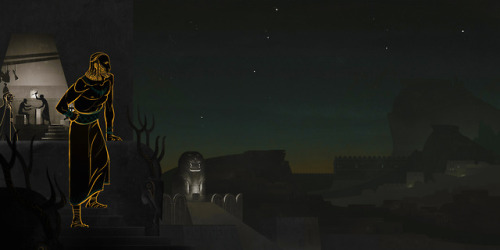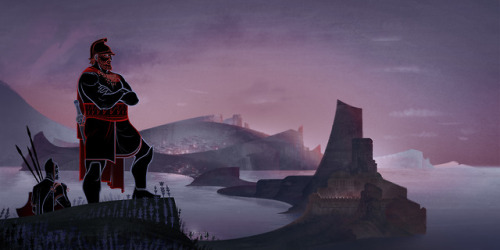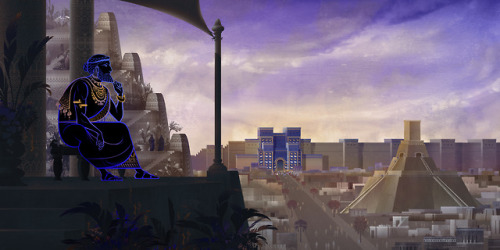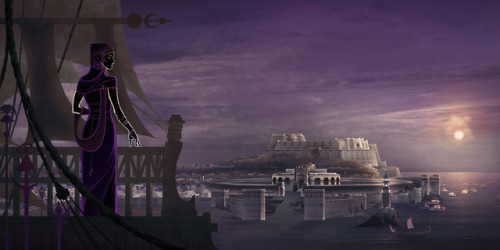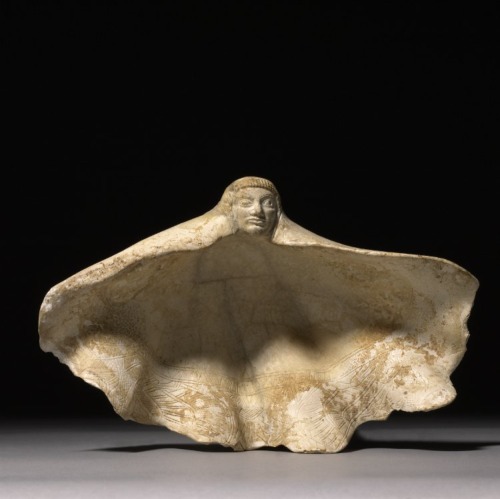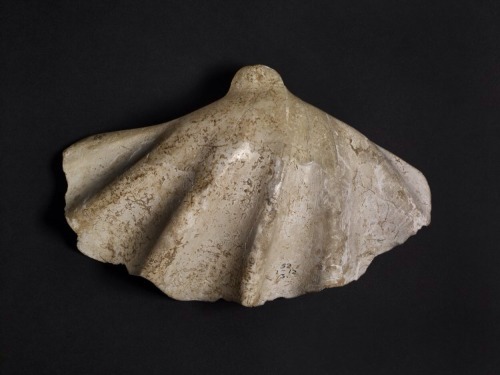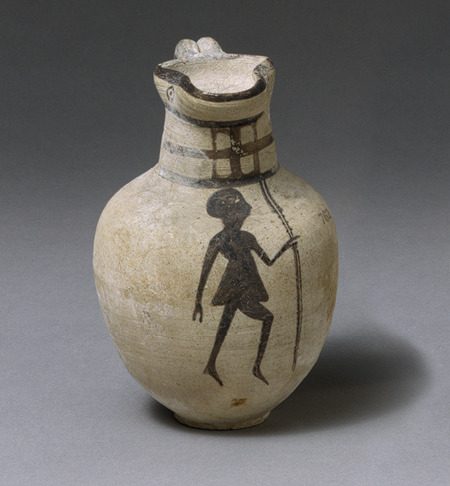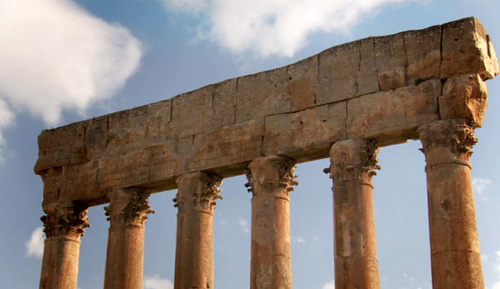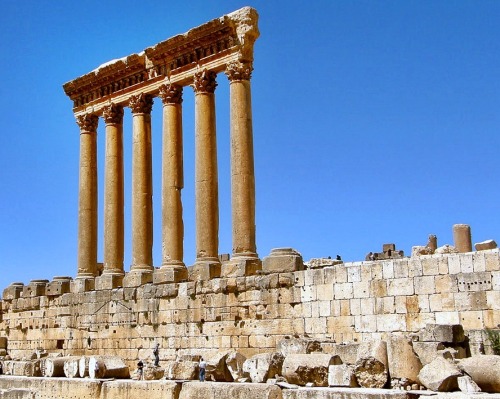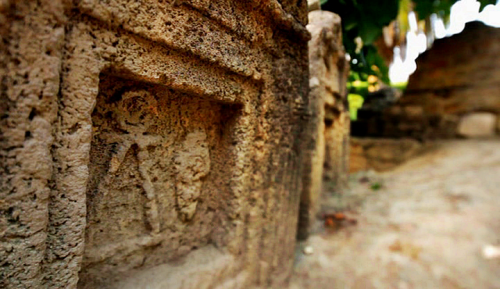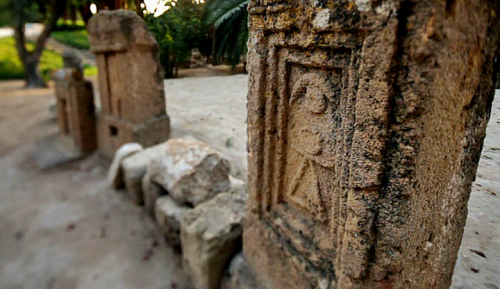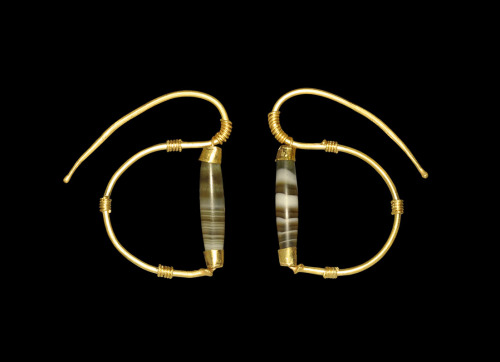#phoenician
Phoenician Votive Figure
Circa: 600 BC to 500 BC
Dimensions: 15″ (38.1cm) high
Medium: Terracotta
Origin: Lebanon
This outstandingly beautiful and well-preserved ceramic sculpture is a votive figure from the middle of the first millennium BC, and represents a Phoenician deity. It depicts a goddess standing on an integral base, which bears an offerings bowl (partly obscured by calcareous concretions), her right hand raised and her left hand at her throat. However, it is the quality of the artistry and the almost miraculous preservation which makes this sculpture so remarkable, for most of the details that can be seen here have been eroded in other examples. The face is exceptional, carved with a serene expression and a half smile, with lidded eyes, a long nose and rounded cheeks.
Post link
Finally finished this whole set and took the opportunity to revamp the older ones.
It’s been fun.
Prints can be found here.
https://oscarcaselart.tumblr.com/
Post link
Phoenician depiction of a sphinx made of ivory. Depictions of them were not solely restricted to Egypt. From Fort Shalmaneser in northern Iraq, circa 900-700 B.C. Now in the British Museum.
~Hasmonean
Post link
Archaeologists identify sacred pool aligned with the stars
“Crucially, the team also found additional temples flanking the Kothon, along with stelae, altars, votive offerings, and a pedestal in the centre of the lake that once held a statue of Ba’al. Together, these indicate this was not a harbour but a sacred pool at the centre of one of the largest cultic complexes of the pre-Classical Mediterranean.”
Ancient Worlds - BBC Two
Episode 6 “City of Man, City of God”
TheTemple of Jupiter Baal, in Baalbek.
ThePhoenician city of Baalbek was known as Heliopolis (the city of the Sun) during the Hellenistic period.
The city became an important religious center during Greco-Roman times and it was one of the largest sanctuaries in the Roman Empire.
The greatest temple of the city was sacred to Jupiter Baal, (Heliopolitan Zeus), identified with the Sun. The Jupiterworshipped there was also understood to be Baal-Hadad, a local storm deity who had been honoured for centuries. The temple was constructed during the 1st century AD (completed circa 60 AD) on top of a podium and foundations presumably from a previous ancient temple. The temple had more than 50 Corinthian columns, 20 meters high, but today only six columns remain standing.
Baalbek, with its colossal structures, is one of the finest and most impressive examples of Imperial Roman architecture.
Baalbek, Lebanon
Post link
Ancient Worlds - BBC Two
Episode 5 “The Republic of Virtue”
TheTophet of Carthage (also Tophet of Salammbó) is an ancient sacred area dedicated to the PhoeniciangodsTanit and Baal located in the CarthageneighborhoodSalammbô. In the Hebrew Bible Tophet was a place outside Jerusalem, in the Valley of Hinnom, where children were sacrifided to the gods Moloch and Baal.
The Tophet of Carthage contains a large number of graves of children; about 20.000 urns were deposited. The urns, often topped by carved stone markers (stelae), contained the charred bones of newborns, very young children and in some cases, of fetuses. Animal remains, mostly sheep and goats, have also been found inside some of the urns. The cemetery was used for over 600 years, between 730 and 146 BC -year of the destruction of Carthage by the Roman Republic.
The tophet is the subject of historical controversy because both ancient texts and archaeological evidence point to the possibility that the children buried in the tophet were sacrificed. Child sacrifice may also have been overemphasized for effect; after the Romans finally defeated Carthage, they engaged in post-war propaganda to make their arch-enemies seem cruel, uncivilised baby killers. Some modern scholars have argued that the Tophet in Carthage may have been a cemetery for stillborn infants and those who died shortly after birth, regardless of the cause. But most archaeologists accept that infant sacrifices did occur. Evidence supporting the tophet burials representing sacrifices include the stela inscriptions which imply that the burials are gifts to the gods and animal remains, who were sacrificed to the gods, presumably in place of children.
Numerous tophets have been identified in the eastern Mediterranean region. The Tophet at Carthage is by far the largest.
Tunis, Tunisia
Post link
Doing just fine ✌️✨
@_ari27_
@phoenicianscottsdale#swimming #tanning #tattoos #scottsdale #arizona #phoenician #resort (at The Phoenician, a Luxury Collection Resort, Scottsdale)
https://www.instagram.com/p/CdQvrD8L2Fv/?igshid=NGJjMDIxMWI=
Post link






